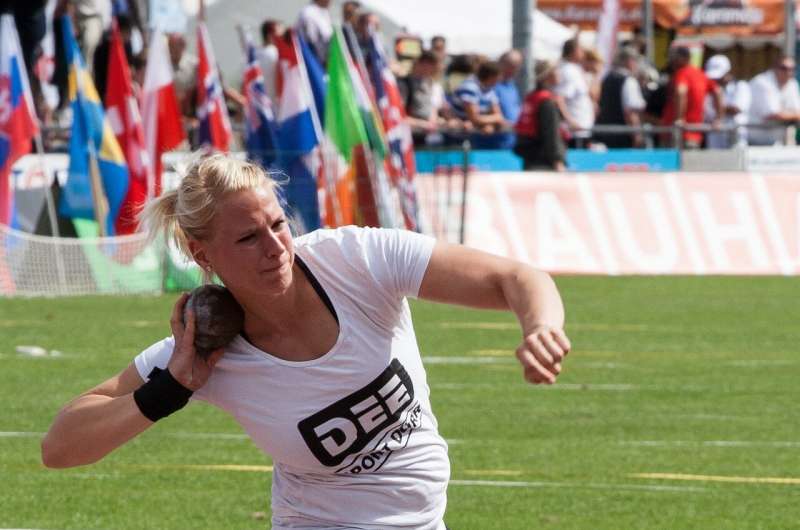This article has been reviewed according to Science X's editorial process and policies. Editors have highlighted the following attributes while ensuring the content's credibility:
fact-checked
trusted source
proofread
New models may help coaches improve throwing athletes' performance

The Summer Olympic Games feature throwing events, such as shot put, hammer throw and discus. One training tool used by these athletes is throwing different mass implements to improve competitive performance, but the method could be improved, according to John Challis, professor in the Penn State Department of Kinesiology.
In a recent study, Challis used data from 20 record-setting male shot put and hammer throw athletes to investigate how scaling the mass of balls and throwing hammers impacts their distance thrown. Then, he developed models to predict throw distance for various ball masses. The study was published in the International Journal of Sports Science & Coaching.
"Part of my research interest includes understanding human movement in terms of scaling—how movement is impacted by our body size, such as our height, length of our limbs and so on," Challis said.
"One of my friends, an Olympian and former international discus thrower, now coaches elite athletes and shared how he and other coaches vary the weights of balls or throwing hammers to improve the performance of athletes' throws. It made me wonder how athletic performance scales with the mass of the throwing implement."
In throwing sports, many coaches utilize the training technique of having athletes practice throwing implements—balls, throwing hammers and discuses—that are under- and over-weight compared to the ones they would use in competition. Varying the weights of the implements during practice allows athletes to hone specific skills that translate into improved performance on the field during competition.
"We know that this training technique is a valuable tool for coaches to use in their training regimens, but I also wanted to see if a model could be applied that would allow coaches to see how their athletes should be performing with various implement weights," Challis said.
"A model where coaches can input their athlete's data and the mass of the ball being thrown can quickly determine if their athlete is under- or over-performing compared to the expected outcome will allow them to modify their training to better address the athlete's needs."
Using real-life data from elite athletes, Challis developed a statistical model to predict the relationship between ball mass and the distance thrown. He then created a simulation model to replicate the movement of an athlete's arm by including the different biomechanic variables involved in throwing, the subject's height and mass, and throwing ball masses ranging from 5.5 to 11.5 kilograms.
Together, he said these models can accurately determine the distance each object should travel.
According to Challis, coaches can use these models to evaluate how their athletes are performing versus the expected performance.
"These models will allow coaches to quickly evaluate their athletes' throws and determine if changes need to be made to their training programs," Challis said. "For example, if an athlete underperforms when throwing under-weight balls, that could indicate that their throwing speed needs to be addressed. If they underperform when throwing an over-weight ball, then their strength may be a potential issue."
Challis explained that finding performance discrepancies enables coaches to help athletes by adjusting training programs to focus on these underlying issues and improve their competitive ability.
"Athletes at any level, especially at the Olympic level, are always looking to identify areas where they can improve their performance that will give them that competitive edge," Challis said. "Training tools such as these models can help them quickly identify any weaknesses or strengths that may make or break their performance in a competition."
More information: John H. Challis, The relationship between ball mass and throw distance: Implications for coaching practice, International Journal of Sports Science & Coaching (2024). DOI: 10.1177/17479541241247308





















